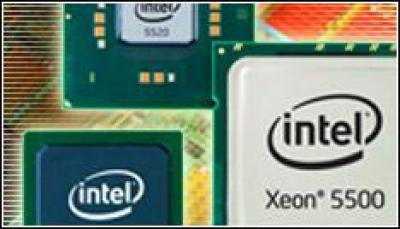IDC Lowers Chip Forecast Amid Weak PC Demand

IDC has dropped its processor shipment forecasts on the back of weakening consumer demand for PCs
Slowing consumer demand for PCs is being blamed for IDC’s decision to lower its processor growth projection this year.
In a report 2 August, IDC analysts said they now expect shipments of PC microprocessors – which include chips for mobile devices, desktop PCs and x86 servers – to grow 9.3 percent in 2011, down from the 10.3 percent they estimated earlier.
Consumer demand for PCs has been an issue for several quarters. Executives from both Intel and Advanced Micro Devices have said over the past few months that while corporations have continued a strong PC refresh cycle, consumer purchases have slowed. They have pointed to Microsoft’s release of Windows 7 last year, saying the new operating system coupled with an improving economic environment after the recession helped drive strong consumer purchases in 2010.
Tablet Impact
Now that many of those consumers have relatively new PCs, demand has waned. In addition, there is ongoing debate whether the rise of tablets, led by Apple’s wildly popular iPad line, has cannibalised some PC sales, putting a further dent into the market.
IDC analysts in June argued that the trend among consumers is for more devices, including smartphones and tablets, which may be impacting PC sales. They reduced their PC shipment growth forecasts for the year, from 7.1 percent to 4.2 percent, based largely on consumer demand.
 “Consumers are recognising the value of owning and using multiple intelligent devices, and because they already own PCs, they’re now adding smartphones, media tablets and e-readers to their device collections,” Bob O’Donnell, vice president of clients and displays at IDC, said in a statement in June. “And this has shifted the technology share of wallet onto other connected devices.”
“Consumers are recognising the value of owning and using multiple intelligent devices, and because they already own PCs, they’re now adding smartphones, media tablets and e-readers to their device collections,” Bob O’Donnell, vice president of clients and displays at IDC, said in a statement in June. “And this has shifted the technology share of wallet onto other connected devices.”
That same trend was reflected in IDC’s latest chip numbers. The analyst firm said that worldwide processor shipments in the second quarter fell 2.9 percent over the first quarter, but rose slightly – 0.6 percent – over the same period in 2010.
Revenues in the chip market were $9.49 billion (£5.8bn), down 4 percent compared to the first quarter, but up 5.4 percent over the second quarter last year. However, comparisons with the first quarter were somewhat skewed by the fact that there was an extra week in the first three months of the year, according to Shane Rau, director of PC semiconductor research at IDC.
“The first quarter of 2011 was better than most first quarters due to the extra calendar week,” Rau said in a statement. “So the sequential comparison isn’t surprising. If we took off that extra week, the performance between the two quarters probably would’ve seen a slight sequential uptick from 1Q to 2Q.”
New Platforms
IDC noted that both Intel and AMD are continuing to ramp their respective new platforms – “Sandy Bridge” for Intel, Fusion for AMD – that offer integrated high-level graphics and CPUs on the same single piece of silicon in an effort to improve performance while driving up energy efficiency. The market seems to have taken to these chips with integrated graphics processors, which accounted for more than 60 percent of the total PC processors shipped so far this year.
Executives with both chip makers have said the new platforms rank among the fastest growing in their respective companies’ histories.
In the second quarter, AMD shaved a bit off Intel’s dominant market share, growing its share of the market to 20.4 percent, up from 18.9 percent in the first quarter, according to IDC. Meanwhile, Intel’s 79.3 percent share in the second quarter was a drop from 80.8 percent in the first three quarters.
Via Technologies held 0.3 percent of the market.
Those numbers echo what Mercury Research found last month, when analysts there said that AMD grew its market share to 19.4 percent, mostly at the expense of Intel, which saw its share drop to 79.9 percent.